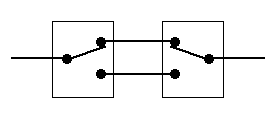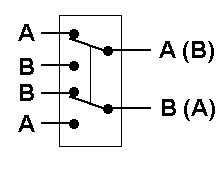How to Wire an N-switch Circuit
A light can be controlled by two single-pole double-throw (SPDT) switches such that the light can be turned on/off at either switch. An example would be a stairway light controlled by switches at the top and bottom of the stairs.

According to The Art of Electronics (Horowitz and Hill), few electronic designers but all electricians know how to wire an N-switch circuit using 2 SPDT and N-2 double-pole double-throw (DPDT) switches. The book leaves it as an exercise to solve, but gives a hint that the trick is to figure out how to use a DPDT switch to make two signals cross each other.
So I first figured out how to use a DPDT switch to cross signals. The following shows how to make signals A and B cross with a DPDT switch.

After you see how the signal cross works, you can figure out how to wire an N-switch circuit. The following diagram shows a 5-switch circuit.

Although my background is in electrical engineering, and at work I'm part of the hardware engineering group, my last hardware design was in 1996 (the AMODSM Full Functional Tester). Nowadays I'm fond of saying that I'm so out of practice that I can barely design a voltage divider. But at least I also know how to design an N-switch circuit, at least with the help of The Art of Electronics, which has saved my hardware engineering ass so many times... I don't understand why Drexel University only makes it a required textbook for non-engineers but never mentions it to actual EE students.
But I digress.